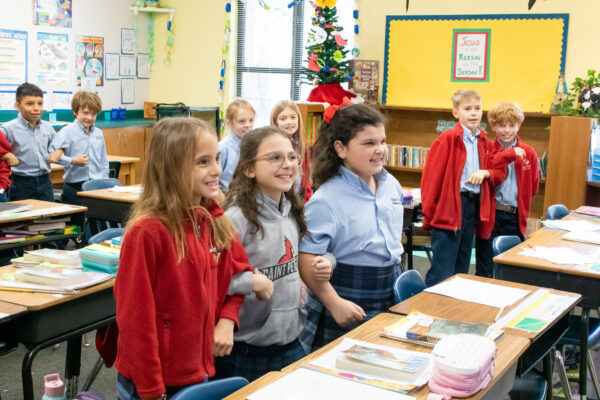Science
Students will learn about the scientific method and how its use is not limited to science only. With teacher guidance, investigations will be performed throughout the school year. Students will learn the different types of energy (electricity, sound, and light) and its sources. The curriculum encompasses the ability to identify, define and explain electrical circuits and currents, the poles and static electricity. Students will be able to identify the basic parts of the human ear and how it receives sound. Lessons on reflection and refraction, renewable and non-renewable resources will be taught, and students will apply lessons on the forces of motion and simple machines. The curriculum will be taught through the use of Studies Weekly readings and discussions, graphic organizers, investigations, research, and illustrations. Technology will be incorporated using BrainPop, Mystery Doug, IXL and Google searches.
Social Studies
Lessons will cover specific landforms in the U.S., its natural resources, regions and global features. Students will be able to identify states and their capitals in the geography unit. Lessons will be taught about life in the colonies and the tensions that led to the Revolutionary War. The creation and structure of the U.S. government, the westward expansion of the American Indians, the Civil War, and Reconstruction will be taught. Students will read and discuss information from the Studies Weekly newspapers, create dioramas and posters. Notes will be taken with graphic organizers and Venn diagrams. Technology will be incorporated using BrainPop, IXL and Google searches.
ELA
Students will apply foundational reading skills to demonstrate reading fluency and comprehension of a variety of literature. Extensive vocabulary, legible print and cursive, implementation of the writing and research process for a variety of topics, and demonstration of the conventions of Standard English is taught. Students will practice speaking and listening actively to communicate effectively. Identification of how information is used to inform, persuade, entertain, and transmit culture is implemented. English 4, the Reading Street series of stories and grammar, and Vocabulary are the workbooks used to teach the curriculum.
Assessments – A variety of tests, projects, oral reviews, subject jeopardy games, BrainPop quizzes, debates and MAP testing.
Religion
Fourth grade Religion focuses on six main concepts:
- Creed – Students focus on the fact that the Triune God reveals Himself throughout history.
- Sacraments – A heavy focus is placed on healing and forgiveness, particularly the healing and forgiving effects exhibited in the sacraments of Baptism, Penance and Reconciliation, and Anointing of the Sick.
- Christian Living – Students focus on making concrete moral decisions and how each decision we make affects us.
- Sacred Scripture – Students develop biblical literacy with an emphasis on reading and comprehending Scripture.
- Christian Prayers and Spirituality – Students are exposed to the richness and variety of prayer in the Church, highlighting both personal and communal forms of prayer.
- Catholic Church – Students’ understanding of their own place in the Church deepens, emphasizing a sense of vocation.
Resources:
Following Christ textbook and workbook
Sacred Bible
Venture newsletters
St. Peter’s Catholic Church
Students attend Mass every Thursday morning, as well as Holy Days of Obligation. They also attend Stations of the Cross during the Lenten season, and pray the rosary. Prayers are said in the morning and at the end of the day before dismissal. Thursday afternoons, our priest, Father Andrew visits the classroom. We also have weekly visits from Sister Agnes.
Math
Saxon Math spirals, allowing students to continue practicing skills learned in previous lessons. Students focus on place value from the hundredths through the millions, multiplying numbers up to 4 digits by 1 digit, and also multiplying two-digit numbers. They divide up to a four digit dividend by a one digit divisor, apply properties of fractions to compare fractions and mixed numbers with like denominators, and multiply a fraction by a whole number. They can classify 2D and 3D figures based on attributes such as lines, angles, and symmetry, as well as solve real world math problems involving distances, elapsed time, liquid volume and masses, and represent data through the use of line plots and graphs.
Resources used for teaching math include:
- Saxon textbook
- Hands on math manipulatives
- IXL program
- Khan Academy
- Virtual math manipulatives
- MAP website
Specials
Students will have two days of Spanish, one day each of Technology, Art, Music, and Physical Education.
4th Grade


